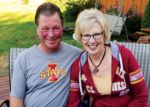Advertise Follow Us
Items Tagged with 'John Deere Planter'
ARTICLES
The secret to planting success boils down to not only equipment choices but measuring, verifying and doing the little things well, says Bill Lehmkuhl.
Read More
Putting the ‘Proof’ in No-Till
Missouri no-tiller Brian Martin is using a methodical, data-driven approach to building a no-till system that is both efficient and profitable.
Read More
Unlocking the Yield Potential of No-Tilled Corn
No-tiller Darren Grumbine has logged 300-bushel-per-acre corn by taking care of the soil and managing nutrients efficiently and responsibly.
Read More
‘Getting Off the Treadmill’ for Better Soil Health
No-tilling, cover crops, biologicals and livestock grazing are pushing Luke Linnebringer’s central Missouri farm toward a more profitable future.
Read More
6 Planter Setups for Tough No-Till Conditions
Growers in central Pennsylvania share how they tweaked their planting units to optimize corn stands while still getting cover crops into their rotations.
Read More
No-Tilling, Cereal Rye Handles Saturated Soils, Improves Stands
No-tilling and planting green into living covers is the right formula to help Frank Martin improve the tilth of his shallow, claypan soils and get better planting results.
Read More
No-Till Creates Path to Success for Young Wisconsin Brothers
Tough lessons about farm management lead brothers Andy and Anthony Beck to no-till. Improved profits and healthier soils turned them into dedicated practitioners.
Read More
Finding Success with No-Tilled Sugarbeets
Cooler soils, moisture retention, better emergence and more sugar content and tonnage are just some of the reasons Greg Schlemmer is going all-in on no-tilling sugarbeets.
Read More
What I’ve Learned From No-Tilling: Patience and Like Minds Yield No-Till Success
From his first no-tilled acres to tweaking cover crops, working with a ‘No-Till Club’ helps Jim Riesberg forge ahead.
Read More














